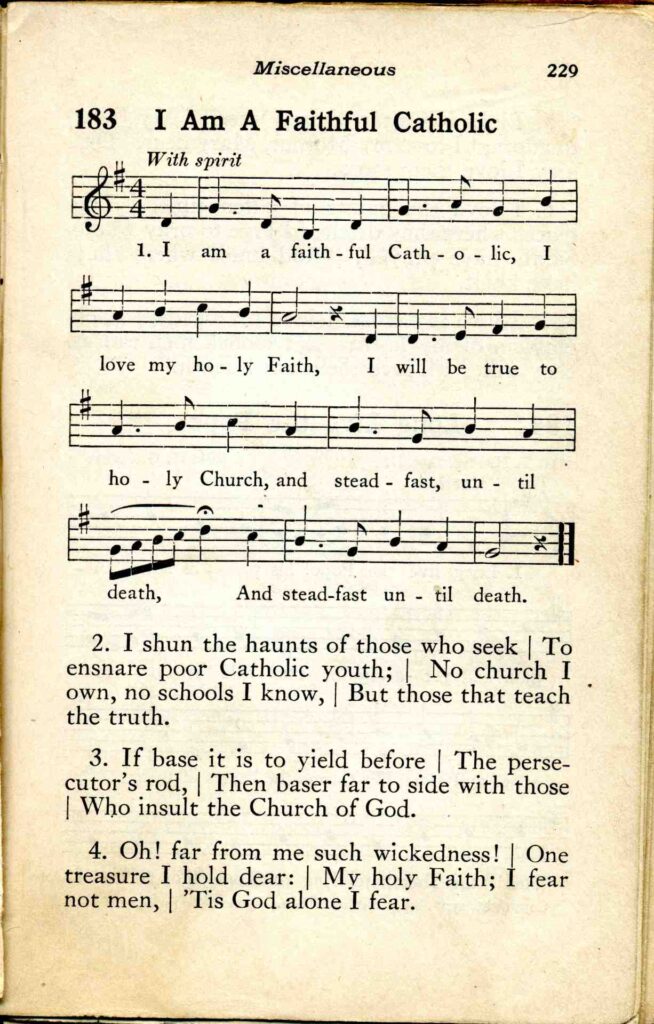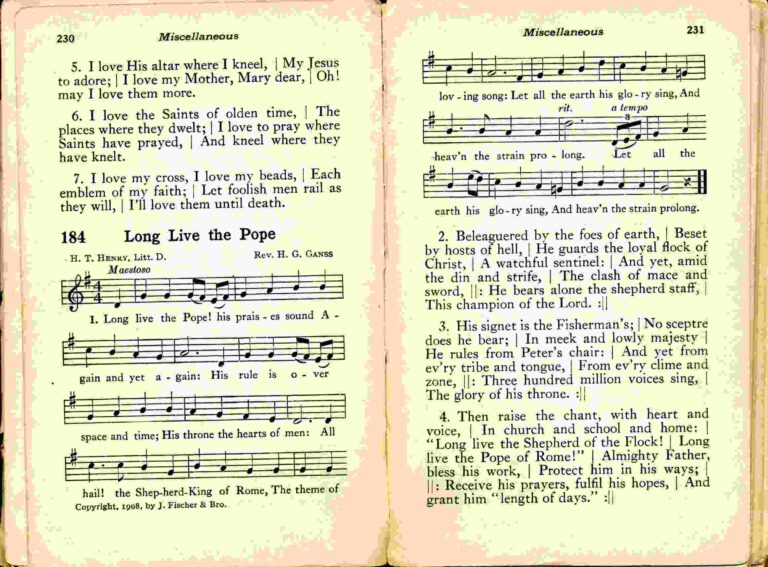Published in 1925, the yellowed and crumbling “Manual of Select Catholic Hymns and Devotions” had been tucked away on a dusty choir-loft shelf alongside stacks of old, unused sheet music. The hymnal’s binding had been broken long ago – a sign of frequent use in a parish that was once among the largest and most active in the Archdiocese of Baltimore.
Carefully leafing through the manual, I was amazed by lyrics that were profoundly, unabashedly Catholic. Although they could sometimes be a bit saccharine, they were undoubtedly meant to bolster devotional faith in an era when American Catholics still faced persecution and ridicule.

Hymn #183 – “I Am a Faithful Catholic” – was particularly striking. With a notation advising that the hymn be played “with spirit,” the song was written in the first person. It required singers to promise that they personally would be “true to holy Church, and steadfast, until death – and steadfast until death.”
“I love His altar where I kneel,” the song proclaimed, “My Jesus to adore; I love my Mother, Mary dear, Oh! may I love them more.”
The saints got similar treatment: “I love the Saints of olden time, The places where they dwelt; I love to pray where Saints have prayed, And kneel where they have knelt.”
The final verse drove it all home with a simple, direct summary: “I love my cross, I love my beads. Each emblem of my faith; Let foolish men rail as they will, I’ll love them until death.”
Pretty amazing stuff, huh?
Hymn #184, “Long Live the Pope,” was just as bold.
“Beleaguered by the foes of earth,” the 1908 hymn asserted, “beset by hosts of hell; He guards the loyal flock of Christ, a watchful sentinel: And Yet, amid the din and strife, The clash of mace and sword, he bears alone the shepherd staff, This champion of the Lord.”
Again, the final verse has the clincher:
“Then raise the chant, with heart and voice, In church and school and home: ‘Long live the Shepherd of the Flock! Long live the Pope of Rome!” Almighty Father, bless his work, Protect him in his ways; Receive his prayers, fulfill his hopes, And grant him length of days.”
I don’t know if those songs were sung as frequently as Marian favorites like “On This Day, O Beautiful Mother,” or eucharistic hymns like “Jesus, My Lord, My God, My All,” but the fact that they made it into the manual’s third edition when others were culled suggests that they may have had a attained a certain level of popularity.
In a preface to the hymnal, Redemptorist Father Francis Auth wrote that he hoped the manual would “assist our devout people to sing the praises of God, Our Blessed Mother and all the Saints with more love and devotion, and we trust, with more pleasure.”
The encouragement of “devout, soul-stirring” congregational singing was a priority, he said. To get there, “we must unite on something churchly, beautiful and stable.”
A lot has changed in liturgical music over the last century, but it sounds to me like Father Auth’s basic advice is just as sound today as it was in 1925.
Copyright © 2011 Catholic Review Media


